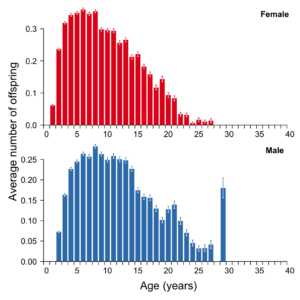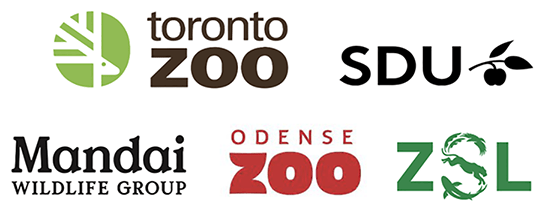We are pleased to introduce Survival, Reproduction and Growth (SRG) Reports in ZIMS!
Drawing upon data recorded and shared by institutions worldwide, the new reports provide zoos, aquariums, conservation centers, and other wildlife managers with missing information required to predict survival timelines and manage populations of species and sub-species. The reports are available to institutions using the Zoological Information Management System (ZIMS).
“Zoos and aquariums are changing what we know about species’ unique lifecycles. By recording essential information, and collaborating to enable insights such as these, the global community improves how we care for individual animals and sheds new light on conservation strategies,” said Jim Guenter, CEO, Species360.
Based on data curated by experts at more than 1,200 zoos, aquariums, and wildlife centers worldwide, the SRG reports offer insight not found elsewhere. For example, reports give directors a clearer view to survival probability, remaining life expectancy, average number of offspring, and more for their institution’s animals and for approximately ten percent of the extant mammal species.
Collection Management: Sustaining ex situ populations

Zoo, conservation, and wildlife experts will use the ZIMS reports to help determine whether a population is healthy, and how to best sustain the well-being of individuals and groups. This is essential to managing “ex situ” populations residing in wildlife refuges, marine reserves, zoos, aquariums, and other institutions.
“Wildlife cared for by zoological institutions often represent the only assurance that a species may survive when populations decline or become extinct in the wild. Reintroducing species like the Iberian lynx and the California condor are examples of what can be achieved through collaborative efforts. But as extinctions rise, we need better insight to the species we are working to save. This is our focus, and these lifecycle reports are a critical step forward,” said Dalia Conde, Director of Science, Species360, and Associate Professor, University of Southern Denmark.
Conservation leaders and species advocates will use the new reports to help manage assurance populations for species facing extinction in the wild. When threats such as disease, poaching, or encroachment are reduced or removed from natural habitats, assurance populations residing in protective care are critical to reintroducing species in the wild.
On a global scale, access to this type of data is a boost for conservation scientists accustomed to relying on generation assumptions for large categories of species. For example, contrary to theories that predicted that for all species, survival and fertility decline with age, recent studies show some species have constant or increased survival with age, and complex sex-specific patterns. Although based on populations in human care, data on lifecycle traits helps to shed light on survival timelines and conservation strategies for those living in the wild.
“To protect and sustain biodiversity of life, conservation scientists must have access to accurate, data-driven information on species. Historically, some of the most critical information – like lifecycle differences and demographics – is scattered among disparate sources. Our members have established a wealth of information on thousands of species, enabling us to deliver data-driven discoveries with the global community,” said Conde.
Data Sharing: Species360 Members and Conservation Scientists

Access to Survival, Reproduction, and Growth Reports: The reports are available to all of the institutions, regional and international associations, such as World Association of Zoos and Aquariums (WAZA), that use ZIMS as part of the global Species360 community. Users with “Local Admin”, “User” or “Vet – Husbandry” roles already have access to these reports, and you can include them for other roles as well. Logged into ZIMS? Search “SRG” in the Help menu for more info.
Using Global Data to Inform Conservation
Over more than 45 years, global zoos and aquariums have used ZIMS to curate the world’s largest database on animals under human care. The Species360 member community strives to make these data available to support all those who want to conserve species, improve animal care, and advance science. In particular, biologists and data analysts of the Species360 Conservation Science Alliance process and analyze these data to provide critical information to our members and the conservation community. This includes helping IUCN Red List, CITES, TRAFFIC, EDGE, and others to succeed on behalf of the species they seek to protect.
Walk through your own SRG reports with Species360 Training when you login in to ZIMS. For a sample Survival, Reproduction, and Growth report or to inquire about the Species360 Research Partner Program, contact Support@Species360.org.








